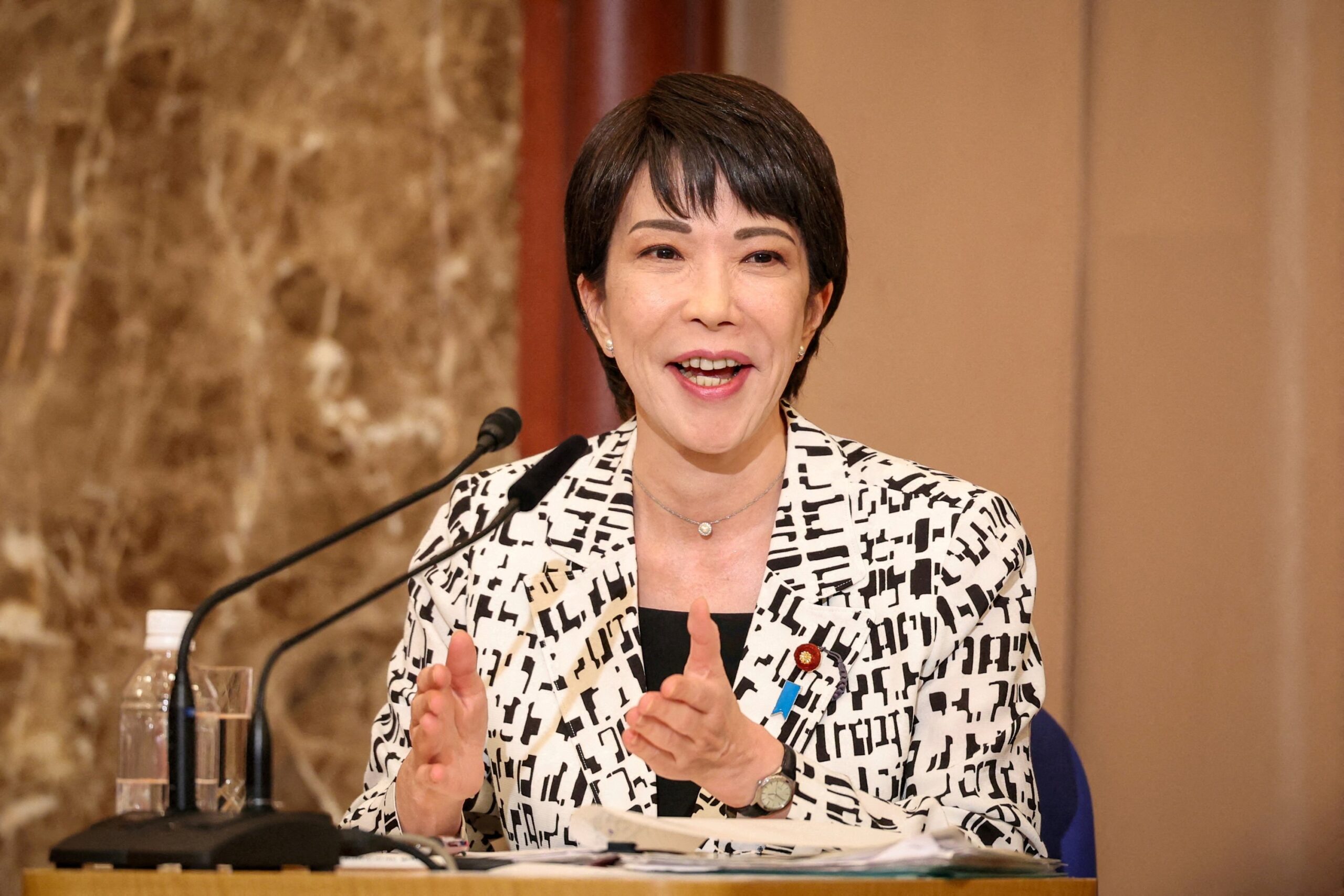On Saturday, October 4, 2025, Japan’s political landscape shifted dramatically. In a historic runoff vote, the ruling Liberal Democratic Party (LDP) elected Sanae Takaichi as its new president. As the head of the LDP, the majority party in Japan’s legislature (the Diet). The 64-year-old veteran politician has now poised to be formally selected as the country’s next prime minister in mid-October. Shattering the highest glass ceiling to become Japan’s first-ever female leader. Sanae Takaichi
Takaichi’s victory is a monumental moment
Takaichi’s victory is a monumental moment for a nation that consistently ranks poorly in global gender equality indexes. Yet, the celebration has tempered by the fact that the woman who made history is a staunch, hard-line conservative. Who has often opposed policies favored by gender equality advocates. Her triumph signals not just a change in gender representation. But a decisive rightward pivot for the LDP at a time of deep party crisis and national uncertainty.
The LDP leadership election has triggered by the resignation of Prime Minister Shigeru Ishiba. Who stepped down to take responsibility for the party’s crushing losses in recent parliamentary elections. The LDP, which has dominated Japanese politics almost continuously since 1955, was desperate for a new leader. Who could restore public trust and stop the erosion of its conservative voter base.
Takaichi, The Sole Woman.
The contest featured five candidates, all highly experienced politicians. Takaichi, the sole woman in the field, has widely seen as the continuity candidate of the party’s influential right wing. Largely composed of the faction once led by her mentor, the late Prime Minister Shinzo Abe. Her main rival was Shinjiro Koizumi, the charismatic 44-year-old former Agriculture Minister. Who represented generational change and a more moderate appeal.

“I made history for the LDP,” Takaichi declared after her win. “Right now, instead of savoring joy, I have overwhelmed by what’s ahead. A mountain of challenges that I have to tackle with help from all of you.”
The “Iron Lady” Agenda: Hardline Conservative Policies Sanae Takaichi
Takaichi’s political profile has defined by her uncompromising, nationalist, and fiscally aggressive stance. An admirer of former British Prime Minister Margaret Thatcher. A comparison that has earned Takaichi the nickname “The Iron Lady of Nara”. Her agenda has rooted in the vision of her mentor, Shinzo Abe.
On the economic front, Takaichi plans to revive elements of “Abenomics,”. The platform of bold monetary easing and robust government spending. She has called for aggressive fiscal stimulus to revitalize Japan’s stagnant economy. A sharp departure from the recent cautionary approach on deficits. Her push includes advocating for a larger defense budget and promoting key technologies like nuclear fusion and cybersecurity. However, critics caution that Abenomics previously exacerbated income inequality and added significantly to Japan’s national debt.
Abenomics 2.0 and Fiscal Aggressiveness.
- National Security and Geopolitics
Takaichi is an outspoken China hawk. She consistently advocates for strengthening Japan’s defense capabilities to counter China’s regional assertiveness. And is a strong proponent of the U.S.-Japan Alliance. Her foreign policy has expected to be firm. Focusing on national interests first, including a stated willingness to renegotiate trade deals. If she believes they harm Japan’s economy. A position that will immediately put her on a potential collision course with U.S. President Donald Trump, who has scheduled to visit the region soon.
Perhaps her most controversial foreign policy positions relate to historical revisionism. Takaichi is a member of the ultranationalist group Nippon Kaigi and a regular visitor to the Yasukuni Shrine in Tokyo. The shrine honors Japan’s war dead, including convicted Class A war criminals. And has viewed by China and South Korea as a painful symbol of Japan’s past militarism. Her continuation of these visits as Prime Minister will almost certainly complicate ties with Japan’s key Asian neighbors, potentially undermining recent diplomatic efforts.
- Social Conservatism and Immigration
Takaichi’s victory also reflects the LDP’s strategy to woo back conservative voters who have drifted toward emerging populist parties. Particularly those capitalizing on anti-immigrant sentiment.
Takaichi has signaled a tougher stance on immigration, calling for greater scrutiny and control over foreigners entering Japan. During the campaign, she even raised eyebrows with an unverified claim about “foreigners kicking deer” in her hometown of Nara, highlighting how immigration has become a lightning rod issue in Japanese mainstream politics. Sanae Takaichi
On social issues, Takaichi adheres strictly to traditional conservative values. She:
Opposes same-sex marriage.
Opposes legal revisions that would allow married couples to keep separate surnames, arguing that it would undermine traditional family structures.
Supports male-only succession for the Imperial Family.
These positions put her at odds with moderate voters and many women who see her as an unlikely champion for gender equality, despite her historic achievement.
The Paradox: A Woman Who May Not Advance Women’s Rights
Sanae Takaichi’s election is a contradiction. She breaks the ultimate glass ceiling in one of the world’s most patriarchal political systems, yet she is not a feminist candidate. Japan ranks low on gender parity, but Takaichi has consistently backed the LDP’s traditional positions on gender issues. While she has promised to increase the number of female ministers in her cabinet to “Nordic” levels, analysts caution that her political survival depends on maintaining loyalty to the powerful, predominantly male, conservative heavyweights who backed her ascent. Challenging the status quo on gender issues could risk her short-lived premiership.
As one political analyst noted, Takaichi’s focus is on national strength and conservative stability, not progressive social reform. While her rise is symbolic, the structural barriers to women’s advancement in Japan’s workforce and politics remain largely untouched by her personal ideology. Sanae Takaichi
Governing a Fractured Nation: The Challenges Ahead
Takaichi inherits a daunting list of internal and external challenges, amplified by the LDP’s recent electoral defeats, which left the party-led coalition in a minority in both chambers of the Diet.
- Political Instability and Party Unity
The LDP is still reeling from public dissatisfaction over a recent funding scandal and the rising cost of living. Takaichi’s immediate task is to heal internal rifts and restore public trust. Her promise to “work, work, work”—a comment she made while deliberately abandoning the concept of work-life balance—shows her commitment but also risks alienating voters looking for a more balanced approach. Since the LDP is now in a minority government, Takaichi will be Japan’s fourth prime minister in five years, raising fears of a return to the instability of the early 2010s. - Coalition and Compromise
Although the LDP remains the largest party, Takaichi cannot govern without support. She relies on the current coalition with the moderate Komeito party, which has expressed concern over her hardline conservative stances, particularly on foreign policy. To pass legislation and avoid further political deadlock, Takaichi will need to engage in the delicate art of compromise and potentially seek to expand her coalition by working with other centrist opposition groups. - Intractable Economic Issues
Takaichi must immediately confront surging living costs and the toxic legacies of Abenomics, which created a surge in poorly paid non-regular employment. She also faces the profound long-term challenge of an aging population (with over 30% of the population over 65) and the accompanying strain on social welfare spending, which accounts for a massive portion of the national budget.

Ascent Is A Moment of Profound Political Significance
Sanae Takaichi’s ascent is a moment of profound political significance for Japan. It places an ultra-conservative visionary—a former heavy-metal drummer and motorbike rider who now models herself on Margaret Thatcher—at the helm of the world’s fourth-largest economy. Her tenure promises strong leadership and a firm adherence to nationalist principles, but it also carries significant risks of escalating regional tensions and compounding the domestic social and economic anxieties that brought her party to this crisis point. The world watches to see if Takaichi can achieve her vision of a “strong and prosperous” Japan while navigating the deep fissures that now divide the Diet and the nation. Sanae Takaichi
Read More Articles Click Here. Read More News Article HERE

















Leave a Reply